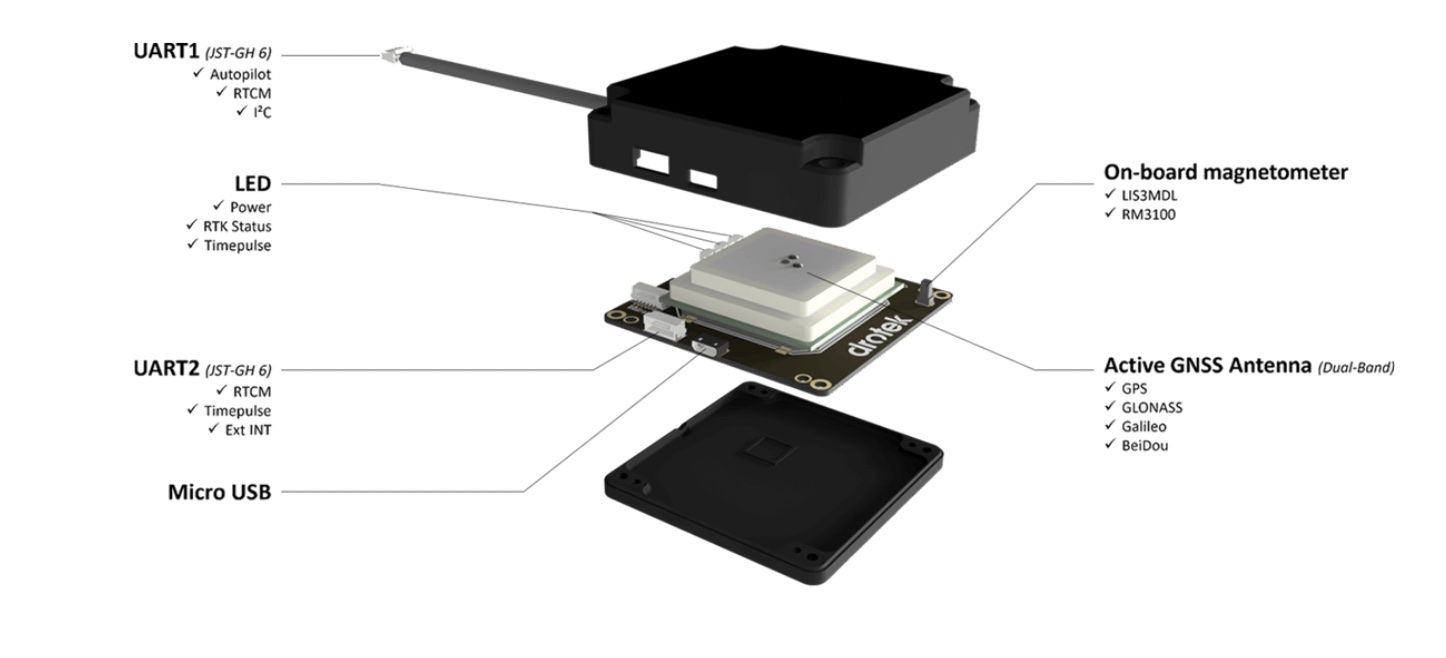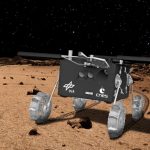The new Sirius RTK GNSS Rover F9P is meant to be mounted on the vehicle that’s moving. Whereas the base is supposed to be immobile (even though it can be mobile, which implies a loss of accuracy), the rover is the module receiving the corrections, providing the information to the autopilot with its position, heading, height…
This new rover module has a built-in active antenna patch. It is capable of interacting with the Galileo satellites network, along with GPS, BeiDou, GLONASS and Galileo networks, which is designed to provide more accuracy for its positioning. F9 Sirius Rover is designed to fit most setup designs as well as easy integration into your vehicle. Its 6 pins JST-GH connector makes it plug-and-play with the Pixhawk PRO 3 autopilot.
The RTK version of the Sirius GNSS comes with ZED-F9P u-Blox module,providing 1cm position accuracy, a convergence time under 10 seconds and a navigation update rate up to 20Hz. Coupled with a base module, it will get your system to achieve accurate missions that you will have planned, thus opening multiple possibilities for your operations, according to the company.
The multi-band GNSS L1/L2 antenna features include:
GNSS
Signal: GPS / QZSS, GLONASS, Galileo, BeiDou
Tracking and navigation: -167 dBm
Update Rate: 5Hz to 10Hz
Positioning
Nav. update rate: RTK up to 20 Hz1
Position accuracy: RTK 0.01 m + 1 ppm CEP
Convergence Time:RTK < 10 sec






